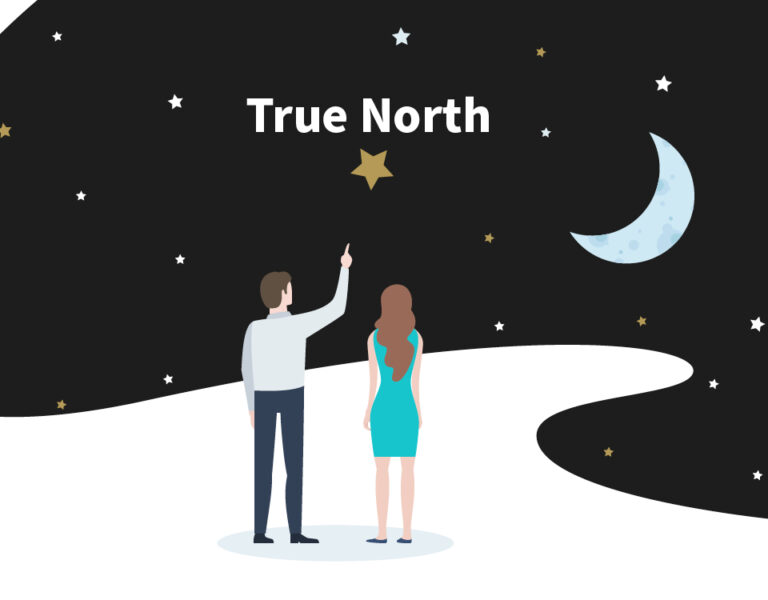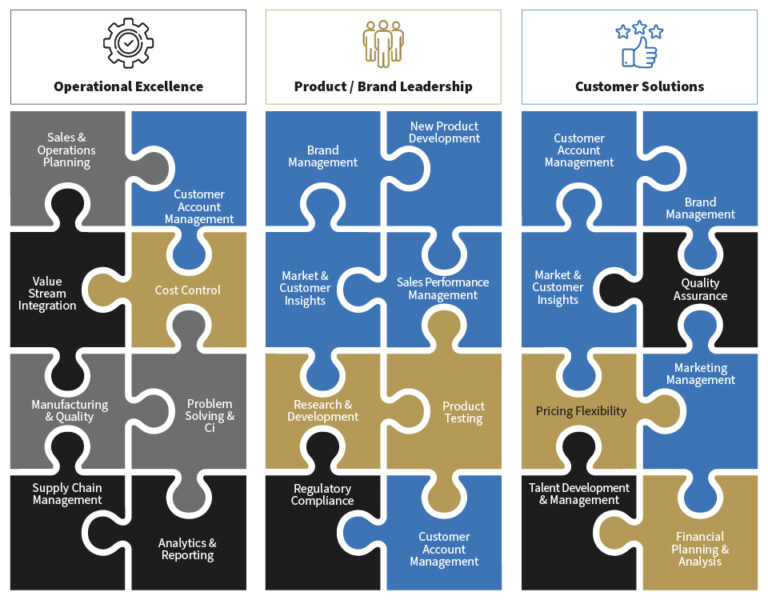Achieving Sustainable Growth

Introduction
In recent years, I have worked with several founders of fast growth SMEs who aspire to sustainably grow their businesses into what the OECD define as a large enterprise (typically a business with more than 250 employees). Every business is different, and there is no one ‘standard playbook’ for growth or one common path through four or five pre-ordained phases. However, there are several themes that enable businesses to grow in a sustainable way. These themes apply equally to SMEs looking to cross that tipping point into becoming a large enterprise or to FTSE companies looking to grow organically and productively.
The first question I always ask business leaders is ‘why grow?’. As someone who has started, scaled and ultimately sold a business, I was very clear about why I wanted our business to grow from a few to a few hundred – My partners and I felt we had an offering which was different and of value, and by growing it, we could have greater impact. Like many founders, we found the early phase of risk and rollercoaster exciting and knew that at the point that our business matured, we would have to deploy different skills and embrace a different mindset. We were clear on what we wanted out of the five years of our fast growth phase but also clear on the various steps we would have to take to build a sustainable business.
The first question I always ask business leaders is ‘why grow?’.
Statistics show that, in the UK, almost 50% of small businesses fail in their first five years of life. I believe that this is because too many have founders who believe that the things that propel them from 5 to 50 people will enable them to grow from 50 to 250. I see many great businesses go from 5 to 50 based on inspiration, a great market offering and a band of fired-up founders. In the 50 to 250 phase, building a sustainable business relies on strategy, capability, organisation, governance and leadership. This phase is tough and requires the development of skills and mindset to push through the growing pains. It is the phase where founders most benefit from coaching and mentoring, taking advantage of a trusted sounding board to support their thinking, planning and execution, and gaining support to reinvent themselves from managers of every detail to leader of leaders.
This long-form article aims to summarise some of the key lessons I have learnt from our own experience and that of coaching business owners who have successfully built their large enterprise.
- Growth Strategy:
Many founders in the early phase of their business are fired by a dream or motivated by a strong purpose for their business, which has led to the creation of a compelling story which their initial clients have bought into. They have typically survived the start-up phase with enough customers to have proved the value and potential of their offering. They have also typically navigated the cash demands of the first year and have thrived based on the key resource of energy and persistence.
To move beyond this, particularly to the point where success relies on other leaders and team members, it is critical to develop and codify a strategy that becomes your ‘North Star’ informing each of your key decisions and planning steps and forcing you to make strategic choices that drive investment and the prioritisation of energy.

Your ’North Star’ must answer questions like:
- How are we different from our competitors? – In most markets, it is difficult to grow unless you offer something distinct and different.
- Who are our target customers, and what is our customer value proposition? A typical derailer of fast-growth companies is that leaders either want to be ‘all things to all people’ or to hold on to historical clients or client profiles despite the transformation of the business.
- What are our drivers of productivity? The most obvious benefit of growth is to achieve greater output with proportionately fewer resources.
- What are the key strategic capabilities that will drive success and differentiation – These will typically include process and technology but will always include choices around organisational capability and habits and behaviours (culture).
In our business, developing our North Star enabled us to be clear on the priority levers for success. As a growing consultancy business, we needed to have many processes and systems in place, but ultimately, we were clear that success relied on having great clients and great consultants who both passionately bought into our approach. Our energy, capability and governance focused on ensuring both were in place.
As well as informing the plan to grow, this ‘North Star’ provides engagement and direction to new hires who need to make choices and decisions aligned to the intent of the founders. I meet many founders who seem to think this should happen by osmosis: ‘Why can’t the leadership team understand what we are trying to do?’. It is generally because there has been insufficient articulation of the strategy.
- Perform a continuous ‘Current State Assessment’
One of the benefits of having developed your ‘North Star’ is the ability to critically review the current business against the strategy to establish where the points of development are. By carrying out a SWOT analysis on a regular basis, it is possible for the leadership team to identify priority actions and track progress. This also provides an opportunity to revisit the strategy to establish that it is still current. In the fast growth phase of any SME, the context is constantly changing, so this type of review is of critical importance.
- Capability, Structure and Governance
An essential part of building a sustainable business is organisational design. Whilst this is an activity which can evolve incrementally with the business, three elements should be done with intentionality.
Having established the business plan as part of the strategy, it is important to establish what the key capabilities are which will form the foundations for performance and success.
A good place to start is the ‘Value Disciplines’ approach, which establishes a framework for identifying capability requirements based on the way that the business generates its differential. I have had many conversations with business leaders who believe that they need to be great at all three of the Value Disciplines, as with all areas of strategy, success comes from making choices.

Stakeholders (including customers and employees) will see coherence from focusing on one Value Discipline and investment, and investment, energy and resources can be targeted. Whilst this model should be thought about carefully and adapted, it provides a useful starting point:
For example, if the business differentiates itself based on exceptional customer intimacy, it is likely that it will need to prioritise capability in areas such as Account Management, generating market insights, quality assurance and pricing flexibility. When a business’s growth starts to fade, it is often easy to point to one or more of the key capabilities as the root cause for underperformance. Establishing the key strategic capabilities and building an organisational development plan that includes hiring, succession planning, and talent management is a key planning step for growth.
Defining and evolving the business organisation structure is also something that needs to be held on to tightly, to avoid either the lack of focus or unintended consequences that follow from incorrect structural design. If marketing is one of the key capabilities to build brand awareness, that capability should not be hidden two or three levels down in the structure. Put simply, the priority capabilities that differentiate the organisation need to be represented in the correct place to ensure that its voice is heard to a sufficient level.
The third element that should be done with clarity and focus is to define the governance of the business – the drumbeat of review and planning that will ensure that attention is paid to the levers of performance. Put simply, this is about defining what needs to be reviewed, who is most appropriate to review it and how frequently the review should take place. Each of these questions drives behaviour and, when done right, will ensure that the organisational system works to your advantage. Get elements wrong, and a series of unintentional patterns of behaviour emerge, and performance leakage becomes evident. This also provides leadership with an opportunity to confirm that the governance is working by coaching its effectiveness throughout the layers of leadership, driving standards and improvement.
For all the considerations above, one key learning point from working with many business leaders growing their businesses is to act early. At the point when the need for the capability becomes obvious, it is already six to twelve months too late, given the time it takes to hire and onboard key positions or the time it takes to implement and embed new process. This is the point about planning and acting with intentionality. Any business looking to grow should have a clear plan for organisational development which is enacted in a strategic way. This is typically the most important investment that any business makes as they grow, and like any investment, it must follow a plan to drive the strategy.
- Leadership and Culture
In my experience, by far the most common feature of a business that is struggling to break through the ceiling between dynamic SME and large enterprise is the issue of a lack of leadership capability and an inappropriate leadership style. I have been the founder who owns the compass, defines the map, executes every move and administers the detail. In ‘start up mode’, attention needs to be paid to every element: Building strategy, planning the future and building a brand were exciting and meaningful, but controlling cash and ensuring the detail of delivery were what kept us alive. In the maelstrom of this relentless workload, it is important to take a breath and realise that the context has changed, and your leadership needs to be reinvented to suit that new context. Suddenly, you are supported by a growing management structure, multiple functional teams and specialists who are looking for direction, development and empowerment – all of which require a different version of your leadership. If you carry on doing the things you did to ‘stay alive’, you are derailing and disempowering those who are looking to you for leadership.
If you carry on doing the things you did to ‘stay alive’, you are derailing and disempowering those who are looking to you for leadership.
From day one (or early in your growth journey), one of the most critical elements of the ‘North Star’ is to be intentional about the type of culture you want to create – the culture that will ensure that you differentiate your business and deliver the performance you want. When looking to grow and establish a sustainable business, culture is a force multiplier that will ensure that you achieve coherence and consistency in the actions of your people and the experiences of your customers. As the leader of the business, your shadow (role model) has the greatest impact on the culture – people copy what you do, not what you say. The most impactful coaching tends to be working with leaders to intentionally curate a leadership shadow that drives the culture they want, a process that comes through practicing habits with intensity and frequency.
- Growing With Your Business
A cursory review of business articles on SME growth will generally alight on the concept of ‘five stages of business growth’ or similar. In my experience, categorizing the problems and growth patterns of small businesses in a systematic way that is useful to entrepreneurs can be misleading, as each business experiences a subtly different journey. However, what cannot be denied is that businesses go through different phases of evolution, which can be imperceptible from the inside. A founder recently described how he felt like the proverbial ‘boiling frog’, not realising the change that had happened in his business until the water had almost burnt him.
To reinvent yourself (or just adapt) to a new context starts with recognising that the context has changed or is changing. Although a change of context can require more technical skills, it is generally a shift in mindset and the introduction of new or adapted habits that will allow you or your team to respond. Throughout the journey from start-up to large business, founders and leaders must go through a series of reinventions to move from manager of every detail to leader of leaders.
At the same time, is it important to retain a perspective to ensure that the owner maintains focus on their goals for themselves and the business and a clear sense of their strengths and weaknesses and how these match with those goals. In my own experience of business ownership, there were elements that I was strong at and elements that I really did not enjoy. This realisation helped me work out how I could maximise my value to the business and ultimately steered me to decide at what point I should move on. Just like the ‘boiling frog’ analogy mentioned earlier, it is striking how many leadership teams spot this before the founder does. One essential part of putting in place good governance is to establish an independent voice who can help you spot the rising temperature of the water and instigate changes to help you use this as a catalyst to drive growth, not the opposite.
Conclusion
Having worked with many business leaders to manage a journey of growth (both SMEs and larger FTSE businesses), there is no one ‘playbook’ to describe the growth journey or the steps needed to ensure success. However, the five themes above are the lessons I have taken from the experience of leading a high-growth SME and from coaching those who are navigating these waters themselves. The themes deliberately focus on strategy, people and organisation as, in my experience, the pursuit of building a business to deliver growth is essentially a human one. Marketing, sales, systems and processes are all important aspects, but the main derailers and the main force multipliers are direction, capability, structure, governance and leadership.
I also strongly believe that there is no ‘training course’ or PowerPoint deck that can guide leaders to success in this endeavour. My experience of leaders in businesses big and small is that the vision and focus that drives their goals is unique to them – ‘people protect what they build’. Telling these leaders what they should do is generally met with a polite response, or flat-out rejection (why consultancy often only delivers short-term results). With that in mind, the role of coaching and mentoring is well suited to partnering with leaders on this journey, acting as a sounding board, pointing out the rising temperature of the water and exploring options for the delivery of the ‘North Star’. The pursuit of sustainable performance also comes from supporting the development of new habits and critically support in practicing those habits with intensity and frequency.
If you are looking to grow your business and are looking for support in what can be a lonely and stressful endeavour, I would love to talk to you. Contact me at alex@alexlewiscoaching.com













